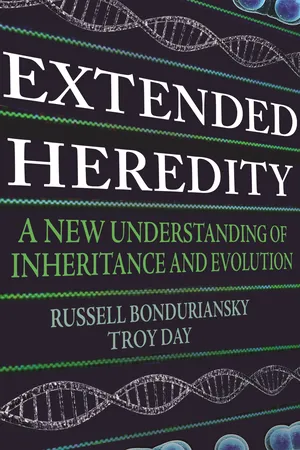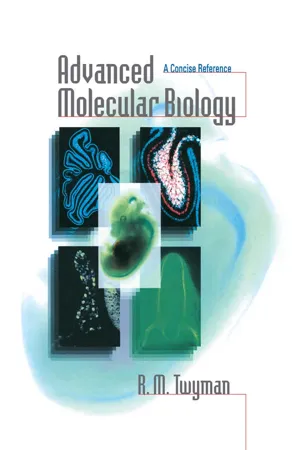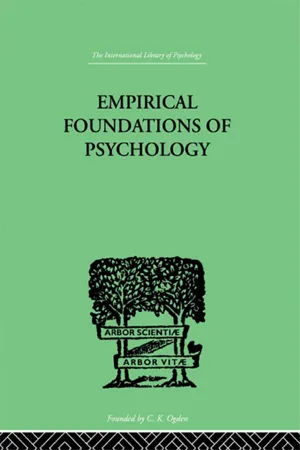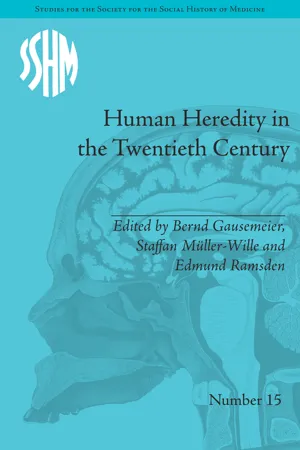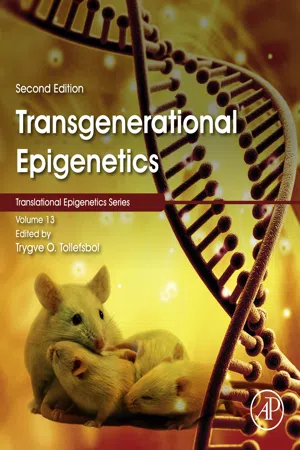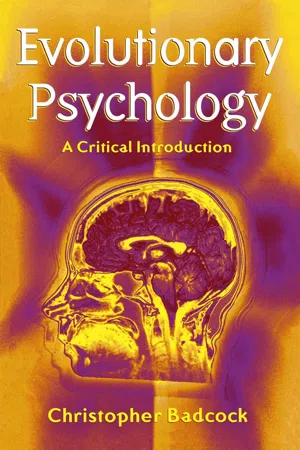Biological Sciences
Heredity
Heredity refers to the passing on of genetic traits from parents to offspring. It involves the transmission of genetic information through the inheritance of DNA, which determines an individual's physical and biological characteristics. Heredity plays a fundamental role in the continuity of species and the variation observed within populations.
Written by Perlego with AI-assistance
Related key terms
9 Key excerpts on "Heredity"
- eBook - ePub
Extended Heredity
A New Understanding of Inheritance and Evolution
- Russell Bonduriansky, Troy Day(Authors)
- 2018(Publication Date)
- Princeton University Press(Publisher)
2 Heredity from First Principles The whole subject of inheritance is wonderful.—Charles Darwin, Variation of Animals and Plants under Domestication, 1875If there is one property that captures the uniqueness of living things, it is their ability to perpetuate their kind through the production of similar forms—that is, reproduction with Heredity.15 In all cellular life-forms (that is, all but the simplest biological entities, such as viruses), biological reproduction also follows a universal pattern that can be said to comprise two basic elements. First, reproduction involves the perpetuation of the cell lineage through an unbroken chain of cell division, such that all cells (including Venter’s chimeric bacteria) come from preexisting cells.16 Second, reproduction involves the duplication and transmission of a DNA sequence, embodied in the famous double helix whose chemical properties encode “instructions” for the synthesis of proteins and the regulation of cellular processes. To us, these two basic elements of the reproductive process imply an inherent duality in the nature of Heredity (figure 2.1 ).In this chapter, we will attempt to reimagine Heredity from first principles. The point of this somewhat quixotic exercise is to walk the reader through the logic of extended Heredity and (we hope) make a convincing case for the ideas that we will elaborate upon and apply later in this book. These ideas are not really new. Although, as we will see in chapter 3 , the triumph of Mendelian genetics in the early twentieth century displaced the debate on the nature of Heredity to the margins of biology, calls to extend Heredity to encompass nongenetic factors alongside genes continued into the 1960s.17 This debate resumed in the 1990s as evidence of inheritance through epigenetic mechanisms such as the transmission of DNA methylation patterns (that is, the presence or absence of methyl groups bonded to certain DNA bases) began to emerge.18 Yet, scientists being a cautious and conservative tribe, the idea of extended Heredity is only now starting to be taken seriously, and the outlines of this new concept are still very much in flux.19 - eBook - ePub
Advanced Molecular Biology
A Concise Reference
- Richard Twyman(Author)
- 2018(Publication Date)
- Garland Science(Publisher)
Box 1.1 ). Mendel’s principles of inheritance can be summarized as follows.(1) The Heredity and variation of characters are controlled by factors, now called genes, which occur in pairs. Mendel called these factors Formbildungelementen (form-building elements).(2) Contrasting traits are specified by different forms of each gene (different alleles).(3) When two dissimilar alleles are present in the same individual (i.e. in a heterozygote), one trait displays dominance over the other: the phenotype associated with one allele (the dominant allele) is expressed at the expense of that of the other (the recessive allele).Table 1.1: Definitions of some common terms used in transmission geneticsTerm Definition Allele Broadly, a variant form of a gene specifying a particular trait. At the molecular level, a sequence variant of a gene (q.v. wild-type allele, mutant allele, polymorphism) Character A biological property of an organism which can be detected or measured Character mode A general type of character, e.g. eye color Character trait, trait, variant A specific type of character, e.g. blue eye color Gene Broadly, a hereditary factor controlling or contributing to the control of a particular character. At the molecular level, a segment of DNA (or RNA in some viruses) which is expressed, i.e. used to synthesize one or more products with particular functions in the cell (q.v. gene, cistron, gene expression) (Gene) locus The position of a gene (or other marker or landmark) on a chromosome or physical or genetic map. A useful term because it allows discussion of genes irrespective of genotype or zygosity Genetic Pertaining to genes. Of characters, Heredity and variation arising from the nucleotide sequence of the gene (cf. epigenetic, environmental - eBook - ePub
- N.H. Pronko, J.W. Bowles(Authors)
- 2013(Publication Date)
- Routledge(Publisher)
The everyday term with its manifold but vague usages got incorporated into biology and psychology. Then these workers got busy and tried to find “something” to which the term might refer. It is as if these investigators heard the term “Heredity” used and were scrambling about in an effort to find something in the world of reality to go with it. The question “What is Heredity?” illustrates the point. Let the reader substitute “mermaid” or “centaur” for “Heredity” and he will get the full force of the argument. Small wonder that as long ago as 1924 Jennings, 4 a pioneer in the study of genetics, said: Possibly we should be better off with no such concept as Heredity; then analysis would be correctly directed toward understanding, in organisms as in other things, in what ways there is dependence on the stuff they are made of; in what ways on the conditions in which that stuff is found. [pp. 225–226]. In our opinion, Jennings is saying that it is too bad that students of genetics did not start with facts. Then, we would not have the contemporary unholy mixture of scientific facts and the superstitious connotations of the term. What could the term “Heredity” possibly “mean”? But let us accept the challenge to find in the “world of reality” some facts for which we could possibly use the label “Heredity.” First, we would call attention to the illustration that attempts to portray the broad sweep of succeeding generations of any species. Just incidentally, we should indicate the complexity and interrelatedness of various portions of this “stream of life,” all of which could never be represented even for the small segment included here. The striking feature of the series of individuals is their origin from a single cell contributed by two individuals of that series. This material we may call hereditary. It is the link between one generation and another - eBook - ePub
- Bernd Gausemeier(Author)
- 2015(Publication Date)
- Routledge(Publisher)
27The contributions to this volume take up these insights from the historiography on eugenics and genetics, as well as on medicine, molecular biology and statistics. Although, as we saw above, recent studies have provided a broader and more detailed picture of the research practices and political contexts that formed the science of human Heredity, important fields such as the social and behavioural sciences, epidemiology and clinical genetics, as well as crucial methods like twin research and medical statistics, have received little attention so far. Moreover, a transnational overview of the approaches to and theories of human Heredity is still a desideratum. We intend to fill these lacunae by representing the diversity of approaches that were directed at or connected to questions of human Heredity in the twentieth century, and by including case studies from various national settings that can highlight different scientific and political constellations shaping the perception of human Heredity. Our primary interest in this is to discuss what it meant to study Heredity in humans , that is to say, to highlight the specific methodological and social implications that arose from attempts to produce evidence regarding the inheritance of diseases, physical features or behaviour in human beings. By delimiting our time frame to what roughly coincides with Hobsbawm’s ‘short’ twentieth century, we seek to concentrate on the period after the consolidation of Mendelian genetics and before biotechnology and sequencing techniques began to transform the field.28 This makes sense not only for pragmatic reasons but also because for many scientists and historians, World War II is a watershed in the history of Heredity research when medical genetics began to privilege the individual over the collective, and population approaches replaced racial typologies. The contributions of this volume allow us to reconsider this narrative, which has recently been challenged by Nathaniel Comfort.29 - eBook - ePub
- Drew Provan, John G. Gribben, Drew Provan, John Gribben(Authors)
- 2019(Publication Date)
- Wiley-Blackwell(Publisher)
Chapter 25 History and development of molecular biologyPaul MossSchool of Cancer Sciences, University of Birmingham, Birmingham, UK- Evolution is the central tenet of biology
- The understanding of monogenic and polygenic inheritance
- DNA as the conduit of genetic information
- The rough guide to the human genome
- Experimental techniques and molecular biology
- Conclusion
- Further reading
Evolution is the central tenet of biology
It is 160 years since the publication of On the Origin of Species by Means of Natural Selection (Figure 25.1 a). Darwin's far-reaching insights placed natural variation and adaptation as the prime determinants of population change. Evolution is now recognized as the unifying theme of all biology, including hematology and medicine, and these landmark observations can perhaps be recognized as the initiation of the modern discipline of molecular genetics.Figure 25.1(a) Charles Darwin. (b) Gregor Mendel. (c) Francis Crick and James Watson. (d) Fred Sanger.However, despite his unique vision and imagination, Darwin was never able to understand the nature of genetic inheritance. It was clear that phenotypic characteristics were passed from one generation to the next, but usually these characteristics were “blended,” so that a combination of tall and short parents would produce a child of medium height. Darwin proposed his own model for Heredity which he termed pangenesis, in which cells of the body shed gemmules that collect in the reproductive organs. The concept was that all the tissues in the body thus had some impact on inheritance, but this concept has clearly been superseded. At this time there was no concept of the distinction between the germline and somatic tissue, and it is therefore not surprising that even brilliant scientists such as Jean-Baptiste de Lamarck believed that acquired phenotypic features could be passed, through reproduction, into the subsequent generation. However, despite his somewhat imperfect conclusions, Lamarck was actually an extremely important figure in evolutionary theory, as he developed the concept that a species can change between - eBook - ePub
Psychological Criminology
An Integrative Approach
- Richard Wortley(Author)
- 2023(Publication Date)
- Routledge(Publisher)
The complexity of the gene-behaviour relationship is further increased by the fact that the expression of genetic traits is significantly affected by the environment, and particularly so in the case of polygenic traits. This point can be clearly illustrated by considering the case of height. A seed planted in fertile ground will grow more vigorously than a genetically identical seed planted in barren ground. Likewise for humans, a person may inherit genes for tallness from both parents, but how tall the person grows will depend heavily on environmental factors such as nutrition, exercise, pollution, climate, and standard of living. It is because of such environmental factors that people today are much taller generally than they were in medieval times, and taller even than they were one or two generations ago.The extent to which variations in a given trait are inherited is referred to as its heritability. Heritability is expressed as a coefficient that reflects the sources of variance in a population. For example, the heritability for human height in a particular sample has been estimated at .8 (Visscher et al., 2006 ). This means that when accounting for the height differences among individuals, 80% can be attributed to genes, with the remaining 20% to environmental factors. In humans, heritability is usually estimated using twin and adoption studies designed to tease out the relative contributions of genetic and environmental factors. However, the exact methods used to calculate heritability coefficients can involve statistical models, the precise details of which need not concern us here. (Those readers wishing to follow up on the underlying statistics of the heritability coefficient can be ‘walked through’ the basic computations by Walsh, 2009 , p. 34.)Heritability is a term that is frequently misinterpreted, so it is important to clarify several issues. First, heritability is not a measure of the extent to which genes contribute to an attribute; it is a measure of the contribution of genes to variations - eBook - ePub
- (Author)
- 2019(Publication Date)
- Academic Press(Publisher)
At the time, the tools by which it would become possible to understand these phenomena were in their infancy; thus, few attempts were made to ascertain the molecular mechanism by which parental phenotype dictated offspring phenotype, irrespective of offspring genotype. For example, although genes were considered to be the units of Heredity, the language of genes and the regulation of gene expression was still largely a mystery. It was not until 1953 when Watson and Crick described the structure of DNA that the intricacies of gene expression could really be explored. Over the years, many more examples of non-Mendelian inheritance were uncovered in diverse fields of biology, bolstering the need for explanation. It was not until the late 20th century when epigenetics evolved to become a formidable field of study that a theoretical framework was available by which to revisit soft inheritance and secure the importance of its role in evolution and Heredity. As discussed in detail later in this chapter, “soft inheritance” of traits largely can be explained by a number of epigenetic processes that are ancestral or environmentally acquired by the parental generation, and that can be meiotically inherited by future generations through the germ line, or that can influence phenotype of future generations without germ line transmission (i.e., prions, mother's milk, parental behavior) [ 53, 54 ], all of which contribute to the study of transgenerational epigenetics. The origins of epigenetics At the time when embryologists such as Karl Ernst von Baer and Ernst Haeckel strived to establish the principles of embryology, the fields of embryology and genetics were studied largely in parallel. Genetics and embryology did not formally intersect until the 1940s when Conrad H. Waddington introduced the concept of epigenetics to explain how a multitude of phenotypes can arise from a single genotype during the development of an organism - eBook - ePub
Evolutionary Psychology
A Clinical Introduction
- Christopher Badcock(Author)
- 2013(Publication Date)
- Polity(Publisher)
2 Genetics and Epigenetics Darwin’s theory of evolution by natural selection required Heredity to preserve and pass on useful adaptations to the descendants of organisms. Yet, as we shall now see, Darwin himself was completely wrong about how Heredity worked. Nevertheless, his error is an instructive one because it arose from what seems at first sight an obvious fact: that Heredity is the means by which organisms are reproduced. However, what appears obvious and what is scientifically true are often two quite different things, and nowhere is this more so than in the case of Heredity. My aim in this chapter is to explore Darwin’s error and show how modern insights have transformed our view of Heredity thanks to the discovery of the gene and the genetic code that translates genes into organisms. This is a critical issue for evolutionary psychology because psychology is an attribute of organisms, not of genes. Yet, as we shall see, genes are the ultimate units of Heredity, and so it is important to understand how and why Heredity works in the way it does. We shall see that Darwin was particularly wrong about Heredity where psychology was concerned, and today no issue is more bedevilled by misunderstandings and confusions than is that of the relation between Heredity and human psychology. Although this is a big subject, and will take several chapters to introduce in anything like the proper detail, this chapter will concern itself with the basic issue of how Heredity does – and, just as important, does not – work. As we shall see, it leads to a new and challenging view of how and why organisms evolved – human beings not excepted. Inheritance of acquired characteristics Charles Darwin’s theory of pangenesis asserted that the characteristics of the whole organism are reproduced in its offspring - eBook - ePub
On Human Nature
Twenty-Fifth Anniversary Edition, With a New Preface
- Edward O. Wilson(Author)
- 2012(Publication Date)
- Harvard University Press(Publisher)
Let us pursue this matter systematically. The heart of the genetic hypothesis is the proposition, derived in a straight line from neo-Darwinian evolutionary theory, that the traits of human nature were adaptive during the time that the human species evolved and that genes consequently spread through the population that predisposed their carriers to develop those traits. Adaptiveness means simply that if an individual displayed the traits he stood a greater chance of having his genes represented in the next generation than if he did not display the traits. The differential advantage among individuals in this strictest sense is called genetic fitness. There are three basic components of genetic fitness: increased personal survival, increased personal reproduction, and the enhanced survival and reproduction of close relatives who share the same genes by common descent. An improvement in any one of the factors or in any combination of them results in greater genetic fitness. The process, which Darwin called natural selection, describes a tight circle of causation. If the possession of certain genes predisposes individuals toward a particular trait, say a certain kind of social response, and the trait in turn conveys superior fitness, the genes will gain an increased representation in the next generation. If natural selection is continued over many generations, the favored genes will spread throughout the population, and the trait will become characteristic of the species. In this way human nature is postulated by many sociobiologists, anthropologists, and others to have been shaped by natural selection.It is nevertheless a curious fact, which enlarges the difficulty of the analysis, that sociobiological theory can be obeyed by purely cultural behavior as well as by genetically constrained behavior. An almost purely cultural sociobiology is possible. If human beings were endowed with nothing but the most elementary drives to survive and to reproduce, together with a capacity for culture, they would still learn many forms of social behavior that increase their biological fitness. But as I will show, there is a limit to the amount of this cultural mimicry, and methods exist by which it can be distinguished from the more structured forms of biological adaptation. The analysis will require the careful use of techniques in biology, anthropology, and psychology. Our focus will be on the closeness of fit of human social behavior to sociobiological theory, and on the evidences of genetic constraint seen in the strength and automatic nature of the predispositions human beings display while developing this behavior.
Index pages curate the most relevant extracts from our library of academic textbooks. They’ve been created using an in-house natural language model (NLM), each adding context and meaning to key research topics.
